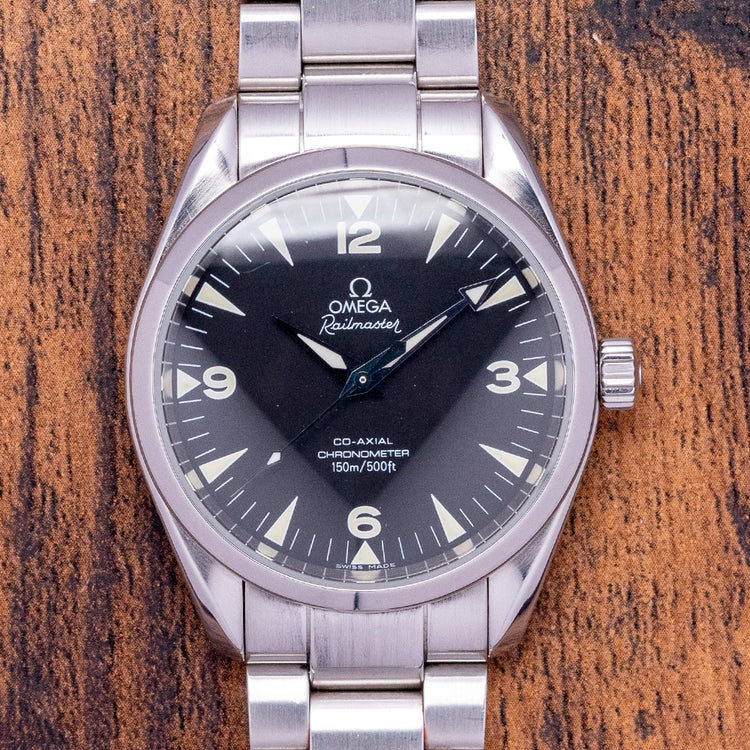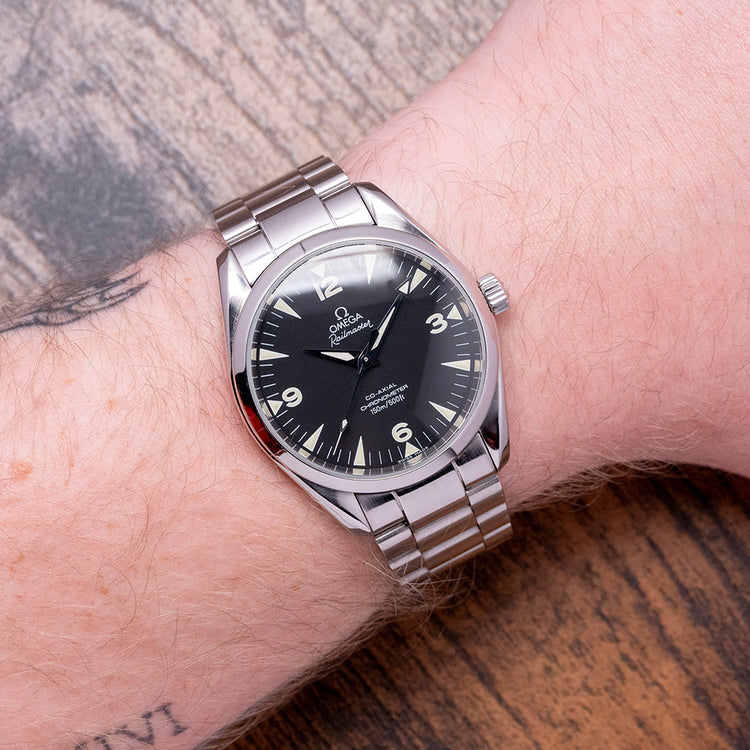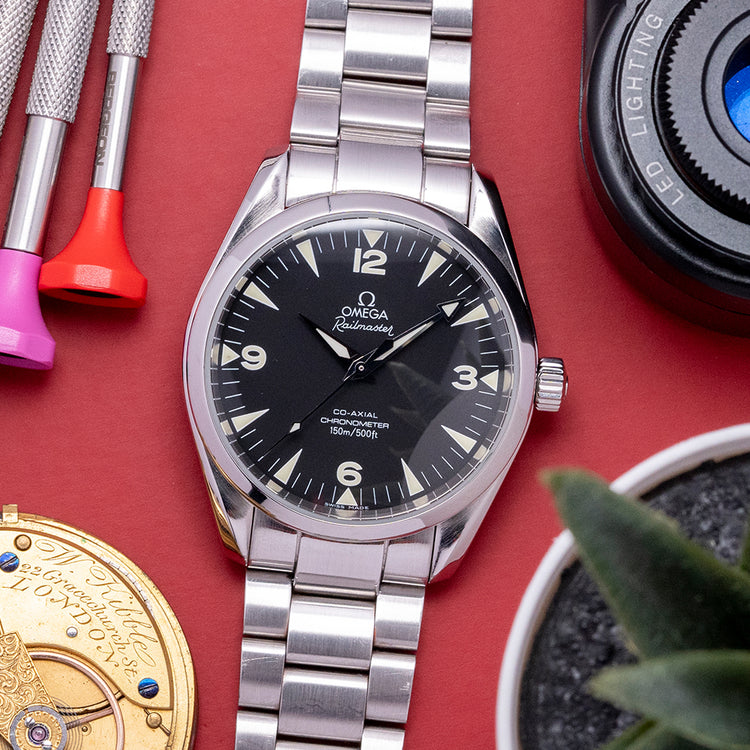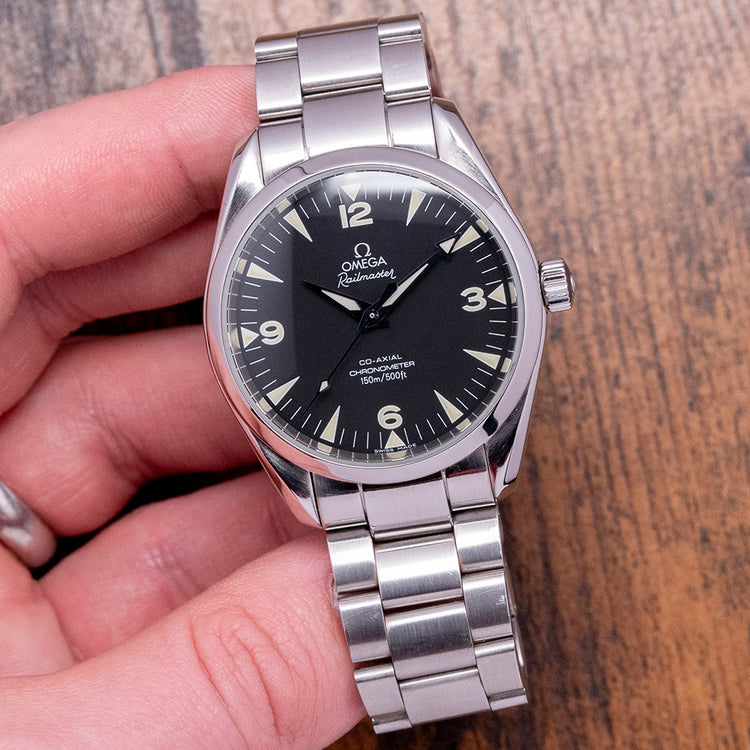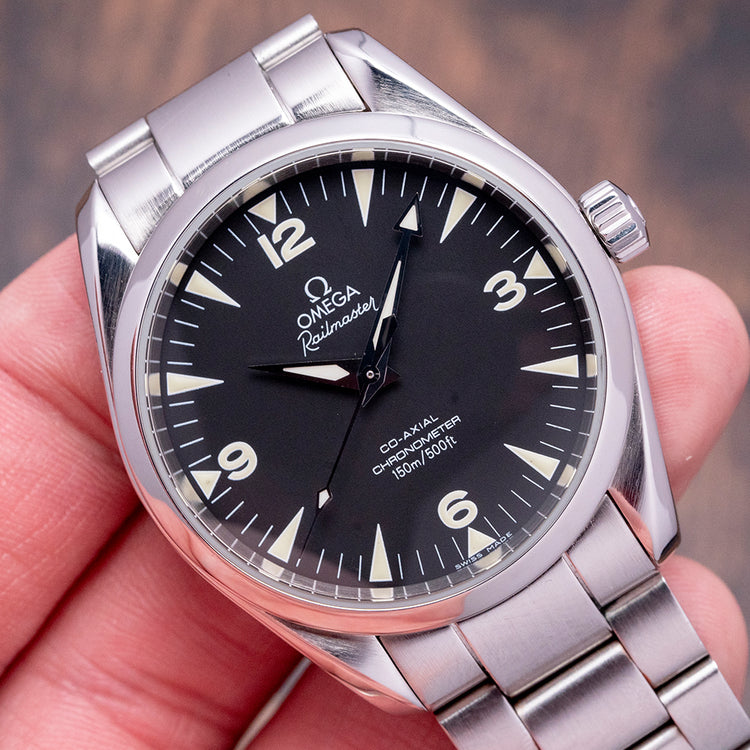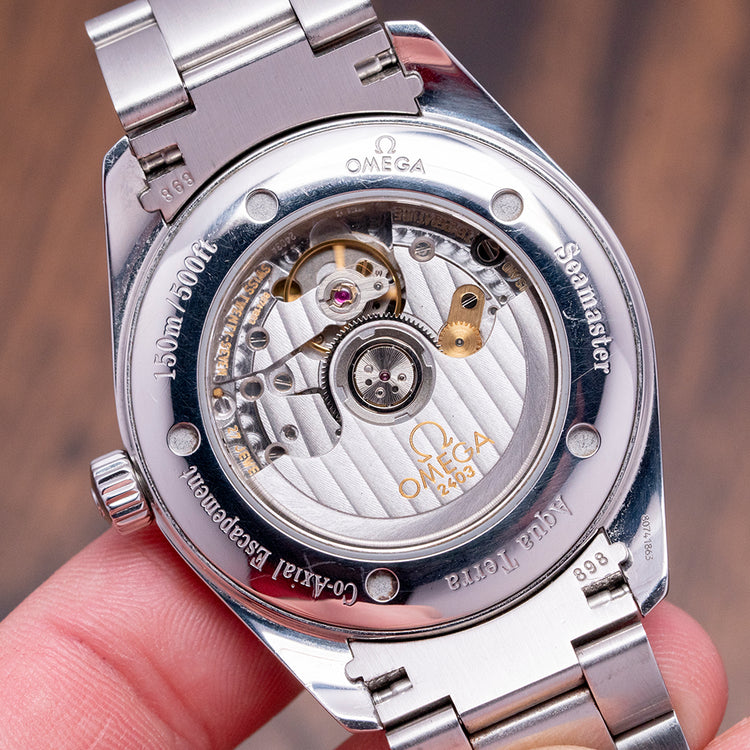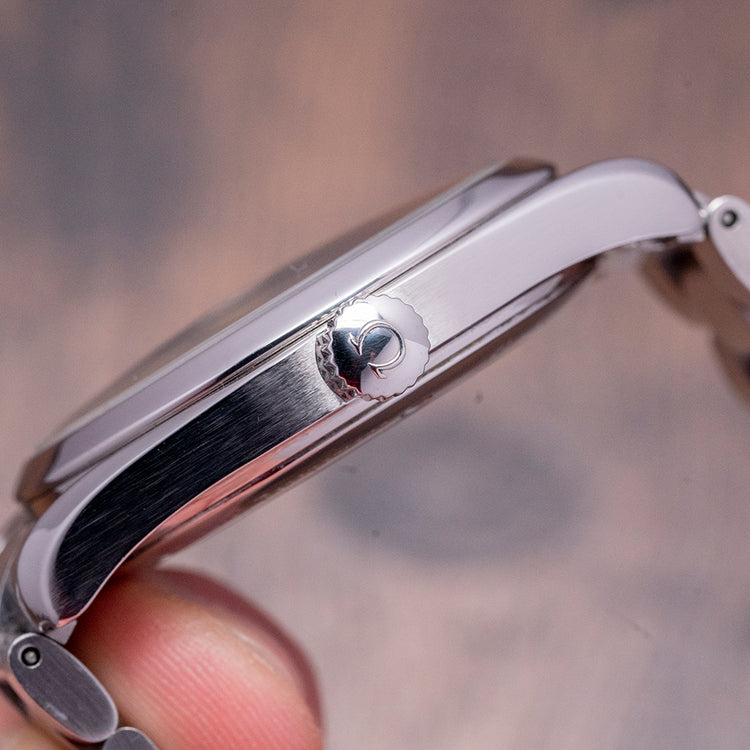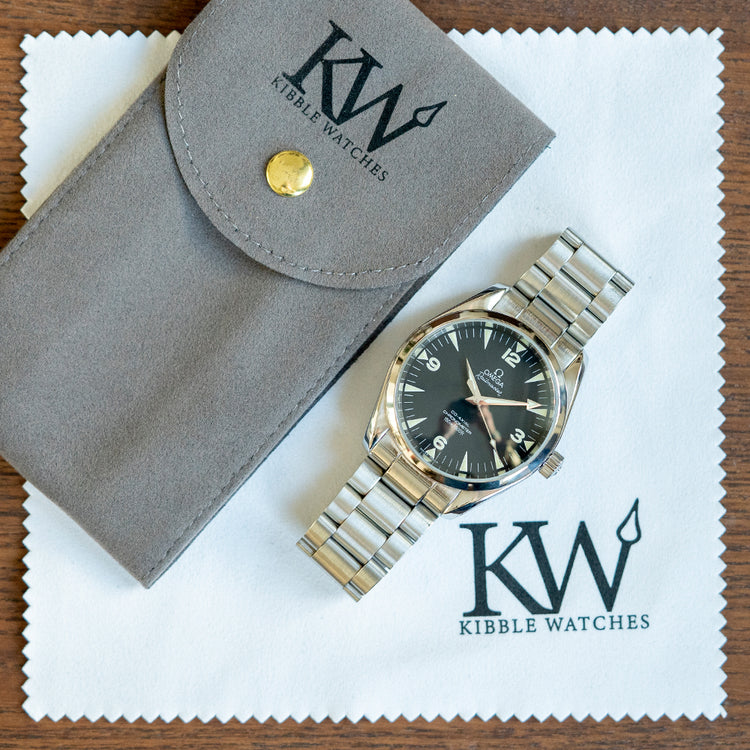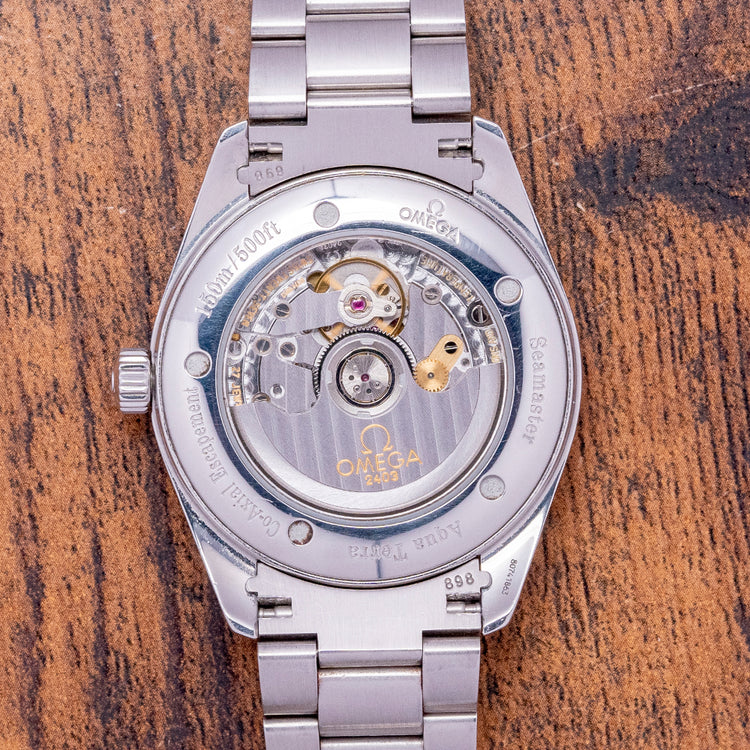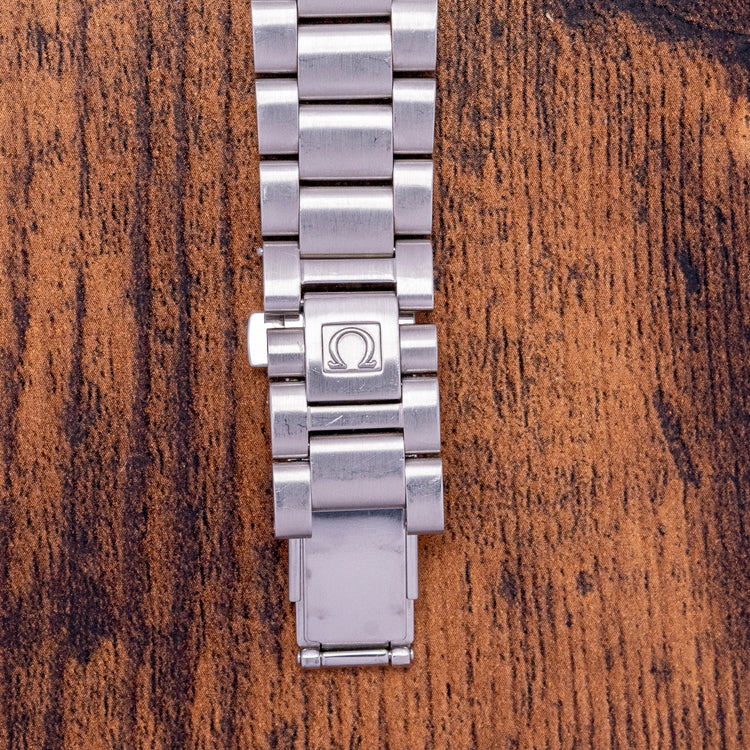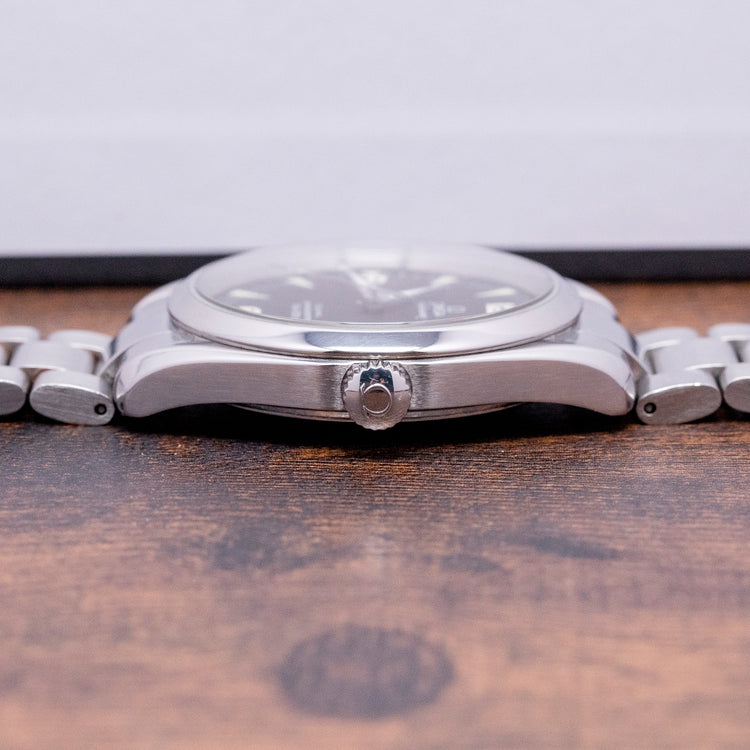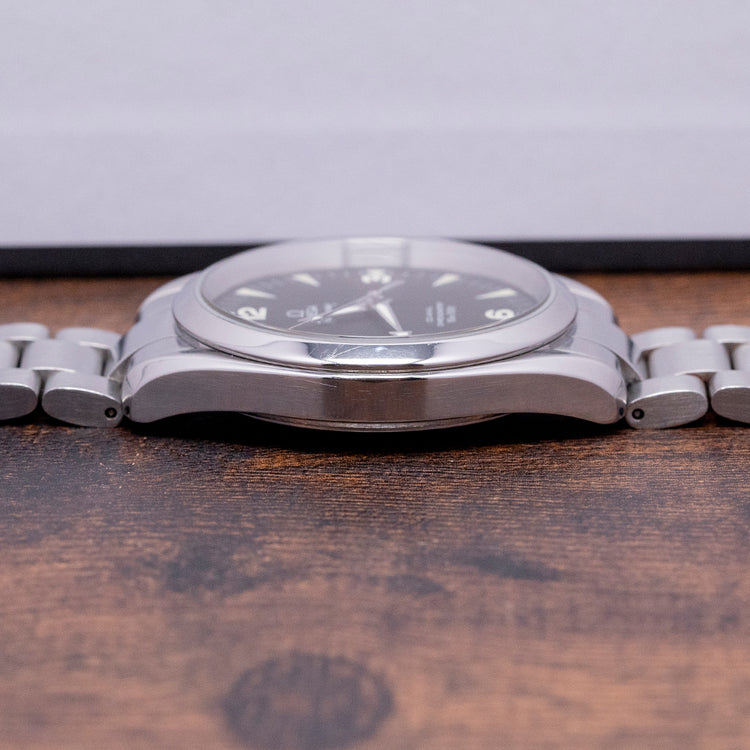More Information
Description
More
Less
Here we have a 2005/06 Omega Railmaster Co-Axial 39mm 2503.52.00, introduced at BaselWorld in 2003, a modern interpretation of the 1957 Omega Railmaster reference CK2914; the purpose of the Railmaster was to achieve accurate timekeeping while working near strong magnetic fields. The 1957 original had shielding that protected the movement up to 1000 gauss; this modern interpretation shields the movement up to 15,000 gausses; researchers and electrical workers working with laboratory spectrometers and electrical transformers have been working closely with Omega to produce these timepieces. The symmetrical 39mm polished and brushed stainless steel case curves with characteristic twisted lugs over your wrist, a lug-to-lug length of 46.5mm, and a case thickness of 11mm give the watch an impressive wrist presence. A signed screw-down crown with deep knurling on the right side for extra grip. The smooth polished stepped bezel holds a domed scratch-resistant sapphire crystal above a striking matte black dial. An outer minute track is precisely executed with the hour markers made up of dagger indexes filled with SuperLumiNova and the 12, 3, 6 and 9 Arabic numerals, perfectly balancing this vintage-inspired dial. Slender arrow steel hands are infilled with the same SuperLumiNova and complemented by a sweeping counterweighted second-hand. At 12 o’clock, we have the Omega motif and “Railmaster” printed underneath. At 6 o’clock, we have the “Co-Axial Chronometer”. On the reverse, a screw-down exhibition case back with the details engraved around its edge. Inside an automatic Omega Co-Axial Cal. 2403, 27 jewels, 25,200 beats per hour, COSC certification. The watch comes fitted on its Omega 20mm brushed stainless steel bracelet; all links are provided, and a push-button butterfly clasp has a large Omega motif with fine brushing.
Points of Mention
More
Less
Personal Note
More
Less
Specification
More
Less
Movement : Automatic Omega Co-Axial Cal. 2403
Age : Circa. 2005/06
Year : 2005
Case Size : 39mm
Case Thickness : 11mm
Lug to Lug : 46.5 mm
Lugs : 20mm
Condition : Pre-Owned
Box and Papers : None
Case Material : Stainless Steel
Warranty : 12-Months NON-Waterproof Warranty
The wrist model's wrist size is 7inch
About Omega
More
Less
Description
Here we have a 2005/06 Omega Railmaster Co-Axial 39mm 2503.52.00, introduced at BaselWorld in 2003, a modern interpretation of the 1957 Omega Railmaster reference CK2914; the purpose of the Railmaster was to achieve accurate timekeeping while working near strong magnetic fields. The 1957 original had shielding that protected the movement up to 1000 gauss; this modern interpretation shields the movement up to 15,000 gausses; researchers and electrical workers working with laboratory spectrometers and electrical transformers have been working closely with Omega to produce these timepieces. The symmetrical 39mm polished and brushed stainless steel case curves with characteristic twisted lugs over your wrist, a lug-to-lug length of 46.5mm, and a case thickness of 11mm give the watch an impressive wrist presence. A signed screw-down crown with deep knurling on the right side for extra grip. The smooth polished stepped bezel holds a domed scratch-resistant sapphire crystal above a striking matte black dial. An outer minute track is precisely executed with the hour markers made up of dagger indexes filled with SuperLumiNova and the 12, 3, 6 and 9 Arabic numerals, perfectly balancing this vintage-inspired dial. Slender arrow steel hands are infilled with the same SuperLumiNova and complemented by a sweeping counterweighted second-hand. At 12 o’clock, we have the Omega motif and “Railmaster” printed underneath. At 6 o’clock, we have the “Co-Axial Chronometer”. On the reverse, a screw-down exhibition case back with the details engraved around its edge. Inside an automatic Omega Co-Axial Cal. 2403, 27 jewels, 25,200 beats per hour, COSC certification. The watch comes fitted on its Omega 20mm brushed stainless steel bracelet; all links are provided, and a push-button butterfly clasp has a large Omega motif with fine brushing.
Points of Mention
Personal Note
Specification
The Brand
Enquire or Book an Appointment
Would you like to discover further details about this watch, or perhaps arrange an appointment to view and try it on? Complete this form and a member of our team will get back to you shortly.
You May Also Like


























